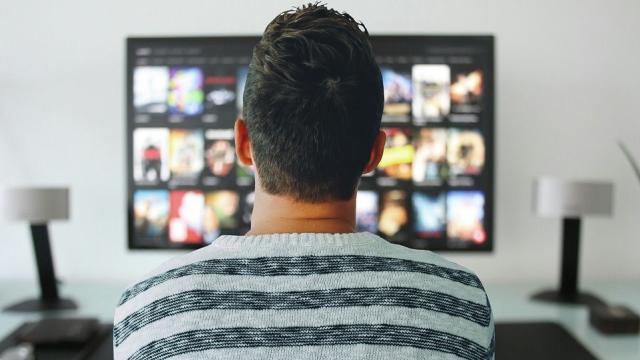Netflix users may soon find that TV and movies on the platform sound better than before. The company announced today that the platform now uses “studio quality” audio that “sounds closer to what creators hear in the studio,” and results in an overall boost to the audio fidelity of its content without requiring more bandwidth or increased buffering.
While this is all technically true, there are some caveats. Let’s look at what this announcement means for subscribers, how much of an upgrade the new high-quality audio actually is, and the hardware requirements.
New streaming tech
You can read a technical explanation on the Netflix dev blog, but essentially, Netflix now applies the same variable bitrate algorithm that it uses for video streaming to audio delivery. Netflix’s apps dynamically shift the streaming quality (or bitrate) based on a number of factors, including your home theatre equipment; your internet connection strength and available bandwidth; and the specifications of the content you’re watching. By changing the bitrate in this way, Netflix is able to achieve the best possible visual or audio quality for your setup at a given moment, while (hopefully) avoid buffering or dropouts at the same time.
In the ear of the beholder
Despite using the phrase “studio quality,” Netflix’s algorithm doesn’t magically enable true, lossless master-quality audio streaming.
Instead, Netflix claims the new high-end bitrates (640 kbps for 5.1, or 768 kbps on Dolby Atmos) are “perceptually transparent” with studio-quality sound—a fancy way of saying “your ears can’t tell the difference.” The company also claims that the lowest of the new bitrates (192 kbps on 5.1) is in the “good” range when compared to studio-grade sound. While it’s true that the human ear can’t detect increases in audio fidelity past a certain threshold, this will only be true of the highest-possible bitrates that Netflix can currently stream at.
That said, unless you’re the pickiest of audiophiles, the new audio bitrates are pretty good, and they won’t result in higher bandwidth requirements or more data usage, either. According to statements made to Wired by a Netflix representative, even uninterrupted streaming at the highest bitrates would add little more than half a megabit per second to Netflix’s total bandwidth usage.
Netflix’s requirements for high-quality audio streaming
The upgrade might be free and won’t impact your data plan, but there are a few requirements users will have to meet in order to experience the better sound quality—and there are even more if you’re looking for the “studio” level of quality Netflix is boasting. At the very least, you’ll need the following:
-
Compatible TVs, set-top devices, game consoles connected to 5.1/Dolby Atmos-supported speakers and/or sound bars that can play audio at the higher bitrates. No other devices are currently supported.
-
Watching movies or TV episodes with 5.1 and/or Dolby Atmos support (supported Netflix titles display a 5.1 or Atmos icons).
-
Either 802.11ac Wi-Fi or hard-wired Ethernet connection supported by an ample internet plan (at least 5 megabits per second for HD video, 25 megabits per second for 4K/HDR).
-
A Netflix Premium subscription is required for Dolby Atmos.
Even with all those components, you’re not guaranteed to receive audio in the perceptual transparency range. That will come down to the power of your audio hardware, as you will need devices that can actually play audio at the perceptually transparent bitrates. At the very least, the average 5.1-supported TV should be able to stream audio in the “good” bitrate range, so even users who meet the bare minimum requirements will notice some level of difference.

Comments